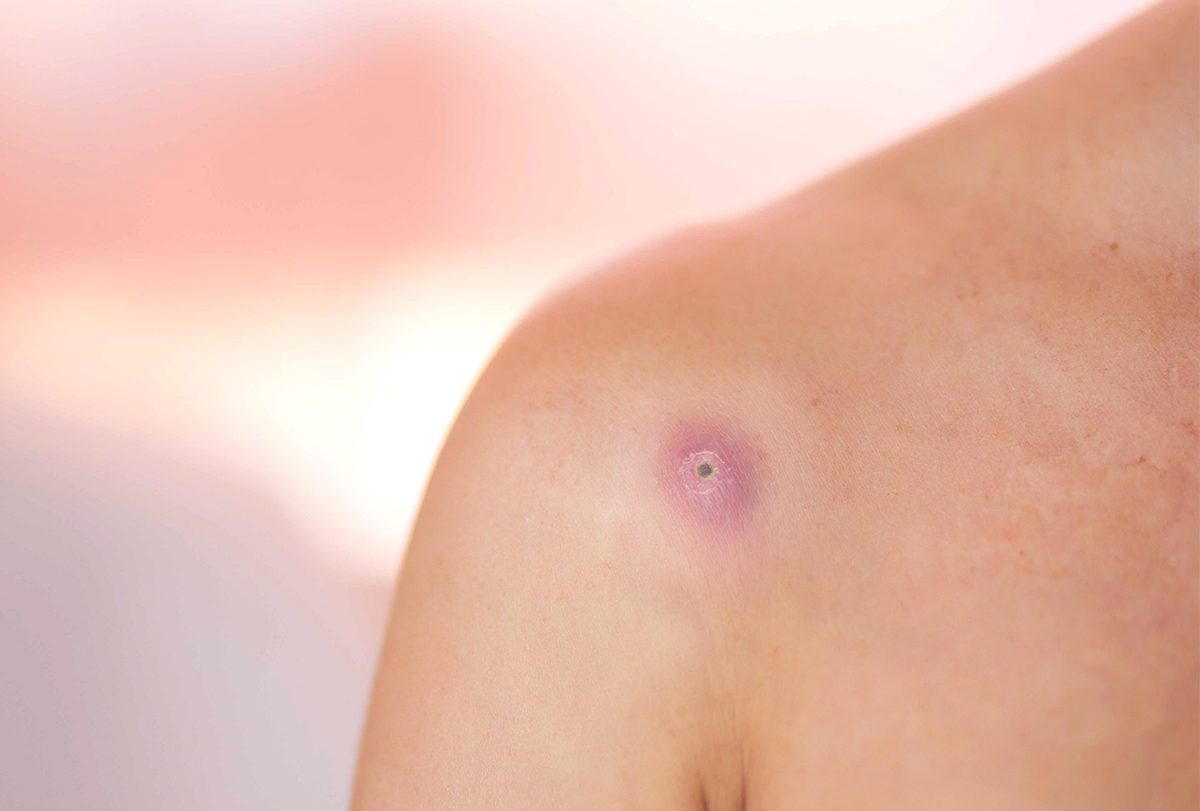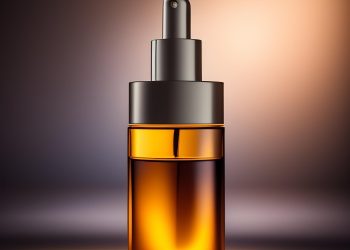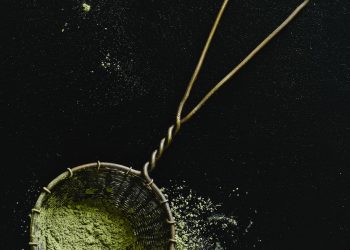Are you suffering from staph infections that are causing skin infections and inflammation?
Are you looking for ways to get rid of it?
If you’re, then no need to look any further, as this article is just the one for you!
Staph infections are caused by a group of bacteria called Staphylococci [1].
These microorganisms are generally found on the human skin. And usually, they do not cause any problems [1].
But sometimes, they can cause skin infections, which can bring pain, redness, and inflammation of the skin [2].
The infections look like honey yellow crusting on the skin and range from a simple boil to antibiotic-resistant conditions to flesh-eating diseases.
Hence, if an infection by staphylococci is left untreated, it can lead to severe medical conditions such as impetigo or cellulitis [2].
This is why it’s a MUST to get rid of staph infections before they worsen and affect your health.
In the following article, we have listed some great home remedies to treat staph infections.
By reading this article, you will get to know about:
- 16 Easy home remedies for staph infections
- How can you prepare these home remedies
- Some prevention techniques for staph infections
All these home remedies for staph infections are safe if you follow the proper dosage and instructions.
16 Natural Remedies to Get Rid of Staph Infections
1. Tea Tree Oil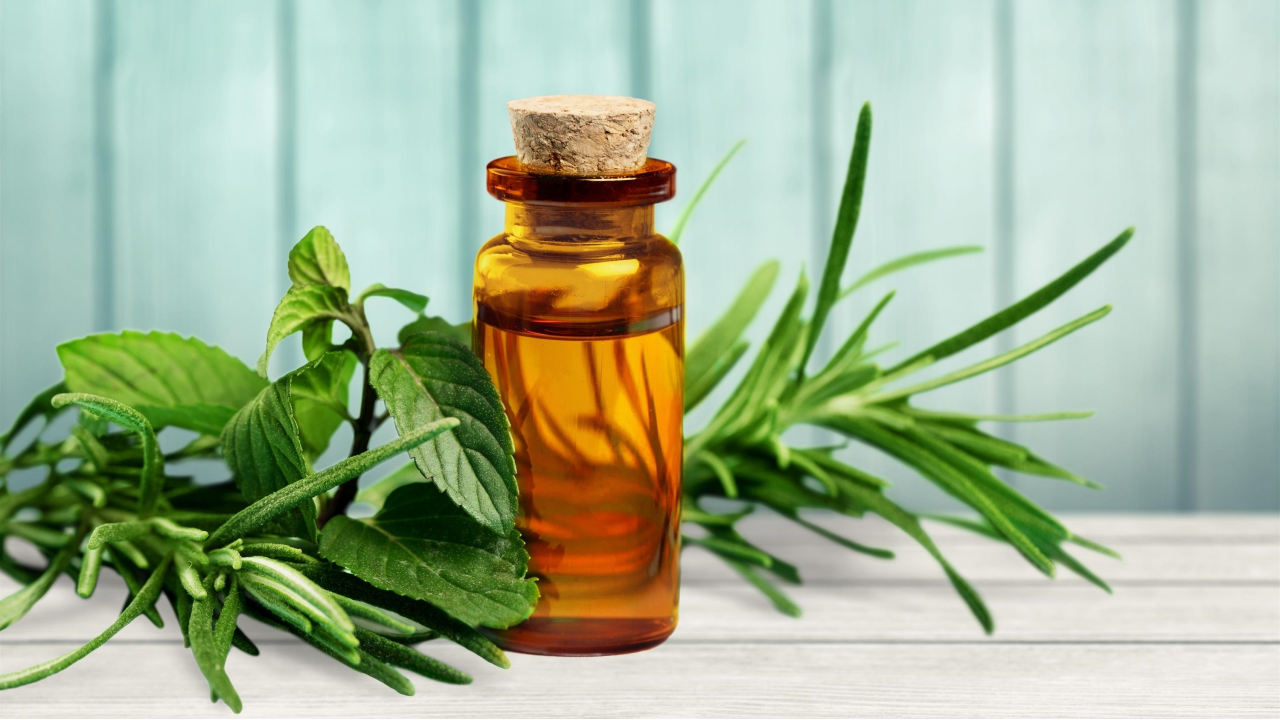
Although more than 30 types of bacterial strains exist in the Staphylococci group, most staph infections are caused by Staphylococcus aureus [2].
Tea tree oil’s ability to combat this particular bacterial strain and many others has been proven in scientific research [3, 4].
This mode of action can be attributed to the presence of terpenes in tea tree oil, particularly terpinen-4-ol [4].
The antimicrobial mechanism of this oil is so potent that it works even on bacteria that have grown resistant to antibiotics, as reported in some studies [5, 6].
Australian scientists reported that the combination of 4 percent tea tree oil nasal ointment and 5 percent tea tree oil body wash was superior to 2 percent mupirocin nasal ointment and a body wash made with triclosan in combating methicillin-resistant Staphylococcus aureus [5].
It’s important to note that tea tree oil can sometimes cause a few side effects, the most common of which is contact dermatitis [6].
This is why it must dilute this essential oil before applying it to the skin.
What You’ll Need:
- 3 drops of tea tree oil
- 1 teaspoon of almond oil
Recommended Directions:
- Add tea tree oil to almond oil.
- Pour the oil mixture into a jar with a lid.
- Cover the pot, and shake to blend.
- Pour a few drops of the oil blend on a cotton swab.
- Apply to the infected area.
- Repeat remedy until the infection is cleared.
Related: 8 Ways to Use Tea Tree Oil for Keloids Naturally
2. Garlic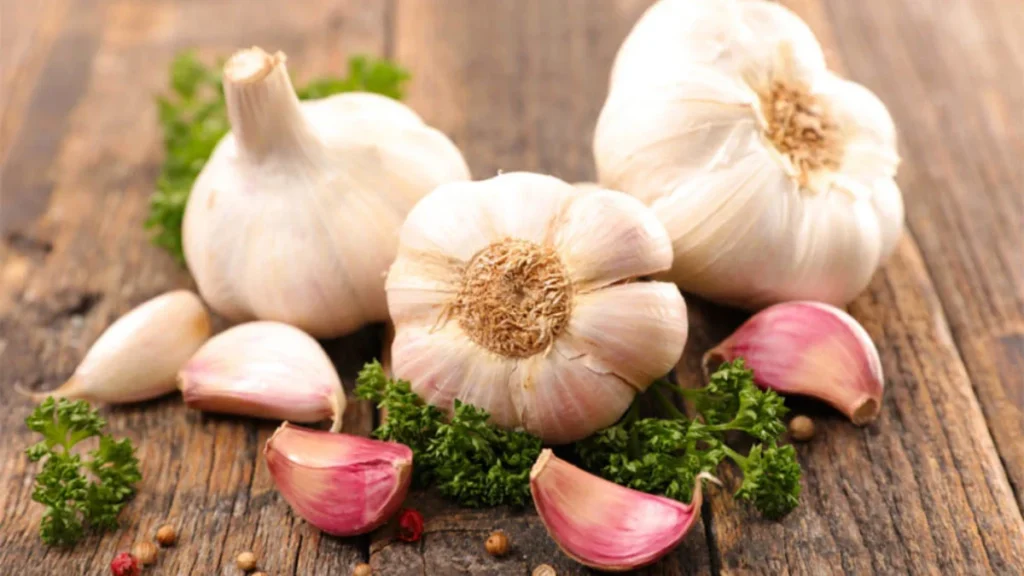
An annual plant that belongs to the Liliaceae family, garlic is commonly cultivated in Africa [7].
For centuries, it has been used to treat various infectious diseases [7].
It has been hailed many times as a powerful antibacterial agent and has become a popular household remedy for bacterial infections.
Its lethal action against Staphylococcus aureus has been well-documented in several research bodies [7, 8, 9].
Clinical data indicates garlic’s water and oil extracts are highly effective in fighting staph infections [8].
Although garlic has broad-spectrum antimicrobial activity, combating various strains of pathogenic bacteria, Staphylococcus aureus is the most susceptible to its toxicity [8].
Researchers recommend using garlic extract and conventional antibiotic medications [8, 9].
It’s one of the herbal remedies proven to have synergistic effects with antimicrobial drugs [9].
What You’ll Need:
- 5 drops of garlic oil
- 1 teaspoon of olive oil
Recommended Directions:
- Combine the two oils.
- Apply the mixture to the affected skin.
- Cover with a bandage.
- Remove the application after one hour.
- Repeat twice a day for three days.
3. Oregano Oil
Oregano is another natural remedy people commonly rely on for treating bacterial infections.
Experts have long investigated the activities of oregano oil against pathogenic bacteria such as Staphylococcus aureus [10, 11, 12, 13]
As discovered in the experiment, oregano oil can disrupt the biofilm formation of bacteria, preventing them from causing any further problems [10]
It was also found that oregano oil interfered with the bacteria’s growth, synthesis, and survival [11, 12 ]
Contributing to this mode of action are its active components such as carvacrol, p-cymene, and thymol, among others [11]
The cells of the bacteria were destroyed after 15 minutes of exposure [11]
With these findings, it can be concluded that oregano oil is an excellent remedy for staph infections.
What You’ll Need:
- 10 drops of oregano oil
- 2 tablespoons of almond oil
Recommended Directions:
- Add oregano oil to almond oil.
- Apply on the skin.
- Leave it on for one to two hours before rinsing.
- Follow this method three times a day for one week.
Related: 19 Essential Oils for Cold Sores Remedy with Directions
4. Honey
Honey is not only a healthier alternative to sugar, but it’s also a powerful antibacterial.
Numerous studies have observed its bactericidal effects against Staphylococcus aureus, as noted by different groups of scientists [12, 13, 14, 15].
Researchers from the United Kingdom found that honey efficiently controlled up to 58 strains of this type of bacteria that have been isolated from infected cuts and wounds [12]
Both pasture honey and raw Manuka honey had the same inhibitory effects on the bacteria tested [12]
Honey’s antibacterial actions were due to its phytochemicals and natural hydrogen peroxide [12]
Canadian researchers, meanwhile, describe honey as a “natural, non-toxic and inexpensive” way to kill the bacterial biofilms that are a precursor to infection [13].
It doesn’t just work on ordinary bacterial strains but also on those that have grown resistant to antibiotics.
A 2002 study reveals that honey can effectively inhibit up to 18 strains of methicillin-resistant Staphylococcus aureus (MRSA) [14]
What You’ll Need:
- 1 teaspoon of honey
Recommended Directions:
- Use a cotton pad to apply honey to infected skin.
- Do this remedy twice a day for one week.
Related: 10 Health Benefits of Honey (Backed by Science)
5. Turmeric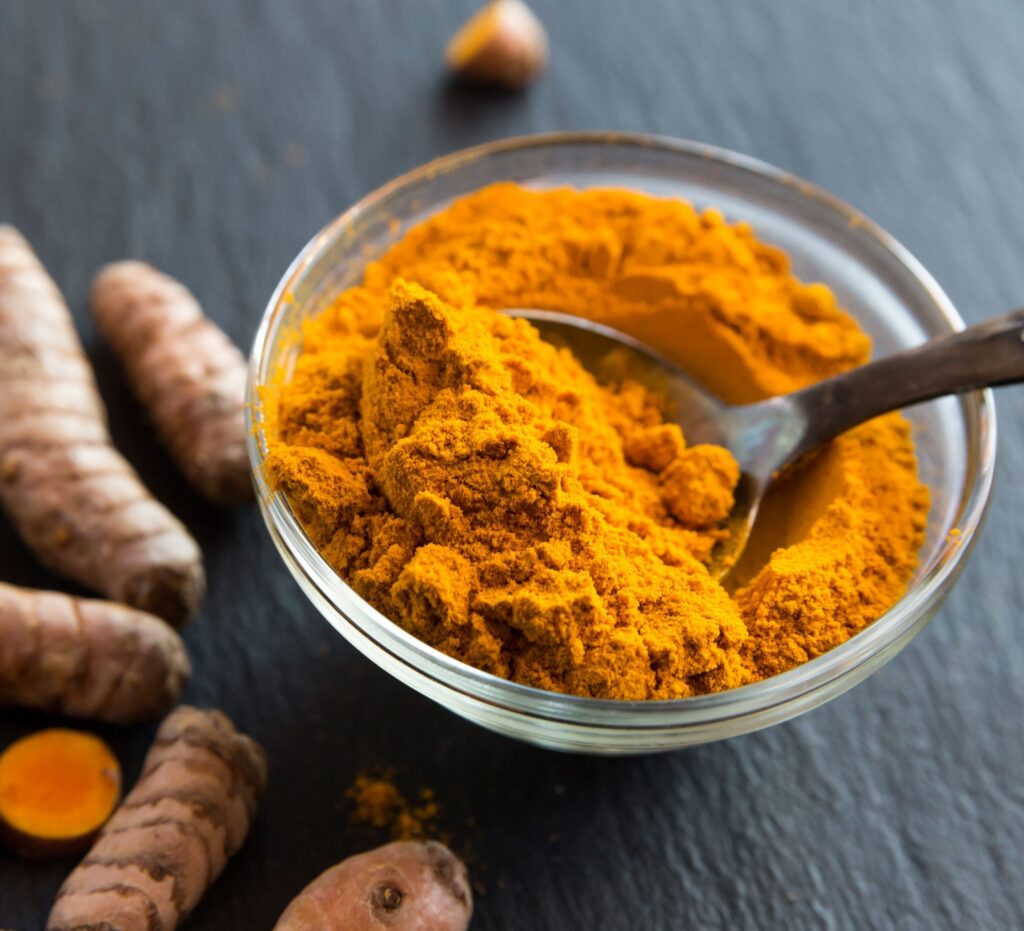
A member of the Zingiberaceae family, turmeric is a perennial herb commonly found in Asian countries such as China, India, Malaysia, and Nepal [15].
There’s a long list of ailments that can be cured using turmeric, including but not limited to cough, anorexia, diabetic wounds, rheumatism, inflammation, sinusitis, and abdominal pains [15].
Turmeric also has solid antibacterial powers that can combat staph infections.
Various studies have confirmed turmeric’s actions against Staphylococcus aureus, even those resistant to antibiotics [16, 17, 18].
According to a study conducted by Seoul National University, turmeric’s biologically active compounds, namely curcumin and curcuminoids, were responsible for preventing the growth, adhesion, and spread of Staph bacteria [17].
MRSA can also be controlled using turmeric as methanol, ethyl acetate, and water extracts [18].
In the experiment, it was shown that cell division and spread were reduced after being exposed to turmeric extract [19].
The efficacy of this herbal remedy can be compared to that of solid antibacterial medications such as erythromycin and ampicillin [20].
What You’ll Need:
- 1 teaspoon of turmeric powder
Recommended Directions:
- Spread a thin layer of turmeric powder on the infected skin.
- Repeat several times every day for one week.
6. Coconut Oil
In many tropical countries, coconut is grown to serve multiple purposes—as a nutritious, medicinal remedy, and material for industrial applications [21].
Many of its parts, including the fruit, oil extract, and leaves, are used in developing medicines for health issues like viral diseases, bacterial and fungal infections, and parasitic infestations, among others [22].
You can use coconut oil to alleviate the problem if you’re suffering from skin infections due to Staphylococcus aureus.
In a study conducted in 2008, 26 subjects with atopic dermatitis were given either virgin coconut oil or virgin olive oil [23].
Both groups reported significant improvement in their conditions, but the alleviation of symptoms was more critical in the group that used virgin coconut oil [24].
Findings reveal that coconut oil not only worked to moisturize dry skin caused by atopic dermatitis but also to colonize Staphylococcus bacteria and kill the source of infection [24].
It’s a simple yet effective way to treat staph infections.
What You’ll Need:
- 1 tablespoon of coconut oil
Recommended Directions:
- Gently rub coconut oil on the skin.
- Let it sit for three hours.
- Then, wash it off with warm water.
- Do this twice a day until the infection clears.
7. Eucalyptus Oil
A helpful remedy for staph infections that’s worth trying is eucalyptus.
A clinical trial performed by Iranian researchers shows that eucalyptus can inhibit more than 50 isolates of Staphylococcus aureus [25].
It also works on other types of bacteria, such as Streptococcus pyogenes and Streptococcus pneumoniae [25].
Many other scientists have delved into the properties of eucalyptus oil as a natural antibiotic and found positive results [26, 27, 28, 29].
Using dilution broth and agar disc diffusion methods, researchers found Staphylococcus aureus and Escherichia coli to be highly susceptible to the antimicrobial actions of eucalyptus [26].
The main compound in eucalyptus, which contributes to its antibacterial actions, is called aromadendrene [27].
What You’ll Need:
- 4 drops of eucalyptus oil
- 1 teaspoon of olive oil
Recommended Directions:
- Mix the two oils.
- Dip a cotton swab in the oil mixture.
- Smear oil mixture on the skin.
- Repeat three to four times a day until the condition improves.
8. Echinacea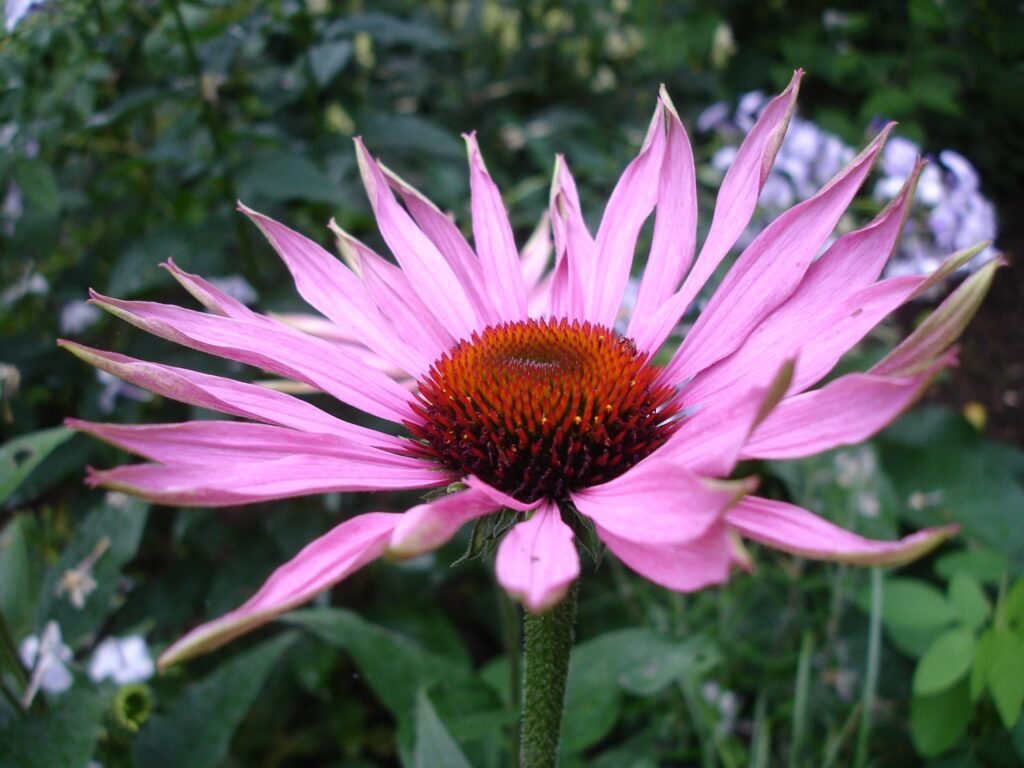
A popular remedy for cough, colds, and sore throat, Echinacea has roused the interest of many researchers [28].
It has been found to have a broad spectrum of antimicrobial activity against various pathogenic organisms [28].
Some people also use Echinacea to cure staph infections.
However, note that Echinacea’s antibacterial mechanism against Staphylococcus aureus is not as potent as on other bacterial strains [29].
However, it still appears to have a positive impact because of its anti-inflammatory actions that help tone down the skin swelling and, at the same time, alleviate other unpleasant symptoms such as pain and discomfort [29].
What You’ll Need:
- 1 teaspoon of Echinacea cream
Recommended Directions:
- Apply cream on wounds, rashes, or boils.
- Repeat three times a day for one week.
9. Goldenseal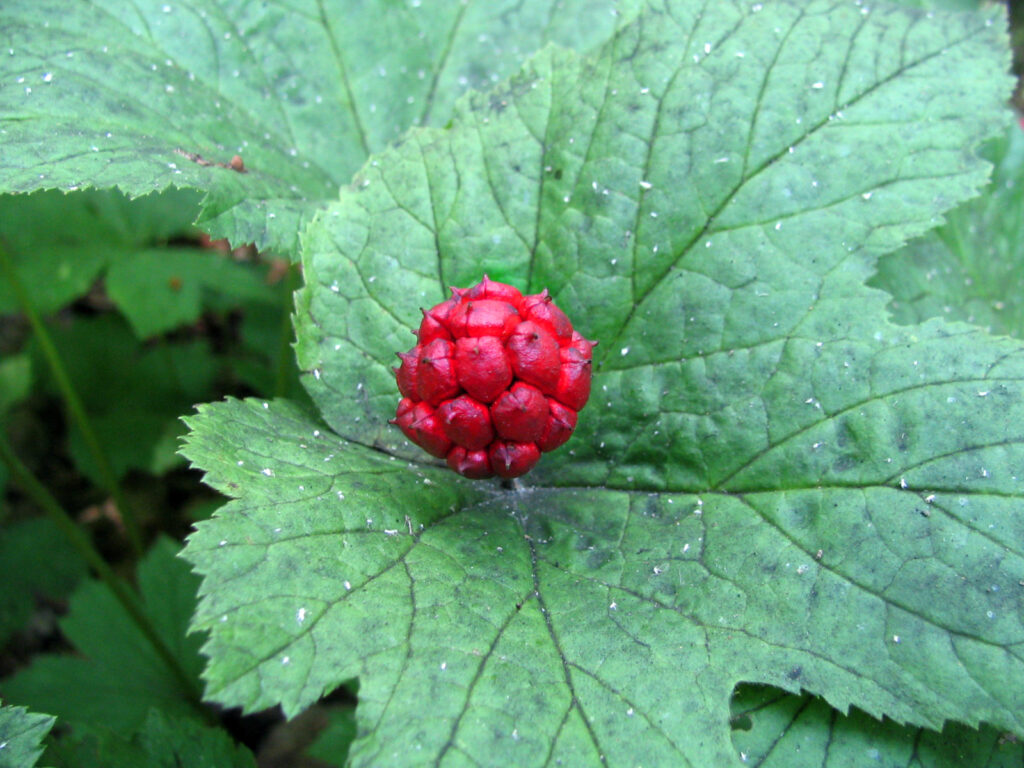
Goldenseal is a medicinal plant usually found in the eastern and midwestern parts of the United States [30].
Its primary compound, berberine, is an alkaloid with strong antimicrobial properties [30].
In 2015, American researchers evaluated the efficacy of goldenseal in destroying methicillin-resistant Staphylococcus aureus [31].
According to their findings, goldenseal can effectively prevent MRSA from producing toxins and damaging healthy cells in the body [31].
Another study conducted in Italy echoed these results [32].
It has been found to have quick-acting results, which means that you can immediately relieve staph infections when using this natural remedy.
What You’ll Need:
- 2 teaspoons so goldenseal
- 1 cup of hot water
Recommended Directions:
- Put goldenseal in a cup.
- Pour hot water into the cup.
- Let it steep for 20 minutes.
- Use this solution to wash the affected skin.
- Do this remedy twice daily for two to three weeks.
10. Peppermint Oil
The bioactivity of peppermint essential oil can be attributed to its volatile compounds like menthol, which has strong antibacterial properties [33].
It is mainly used for combating irritable bowel syndrome, but some have reported its beneficial effects on staph infections [33].
Peppermint oil’s inhibitory effects on a wide array of bacterial infections have been demonstrated in several studies [34, 35, 36].
It stunted the growth and prevented the spread of Staphylococcus aureus, reports a 2000 study [34].
It’s also one of the herbal remedies that have synergistic effects with antimicrobial medications [35].
This means that it complemented or even enhanced the effects of antibiotics.
Please take note, too, that it doesn’t only work on methicilin-sensitive but also methicillin-resistant strains of Staphylococcus aureus [36].
What You’ll Need:
- 5 drops of peppermint oil
- 1 tablespoon of olive oil
Recommended Directions:
- Combine the two ingredients.
- Blend in a glass jar.
- Apply a thin layer of this oil mixture to the skin.
- Follow this technique twice a day for one week.
11. Ginger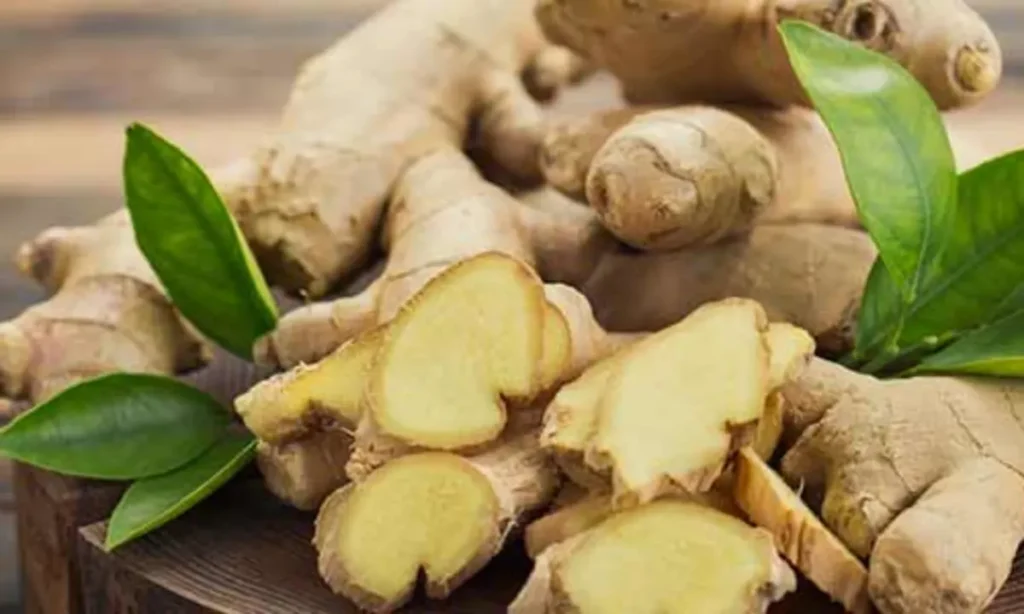
Ginger is a rhizome cultivated not only for culinary purposes but also for its therapeutic benefits.
An East African Medical Journal experiment states ginger extract has potent antimicrobial effects against Staphylococcus aureus and other bacterial strains that bring diseases [37].
Another study that compares the efficacy of garlic, lime, and ginger in combating staph infections proved that the combination of ginger and garlic suppressed the activities of pathogenic bacteria [38].
These scientific findings support the folkloric use of ginger for many types of bacterial infections.
What You’ll Need:
- 1 teaspoon of ginger powder
- 1 teaspoon of honey
Recommended Directions:
- Put the two ingredients in a bowl.
- Mix well.
- Apply a thin layer of the mixture to the infected skin.
- Let it sit for 15 to 20 minutes before rinsing with cool water.
- Repeat procedure twice a day for one week.
- You can also use grated fresh ginger instead of powder.
Related: 20 Great Ways Of Using Ginger To Fight Your Acne
12. Basil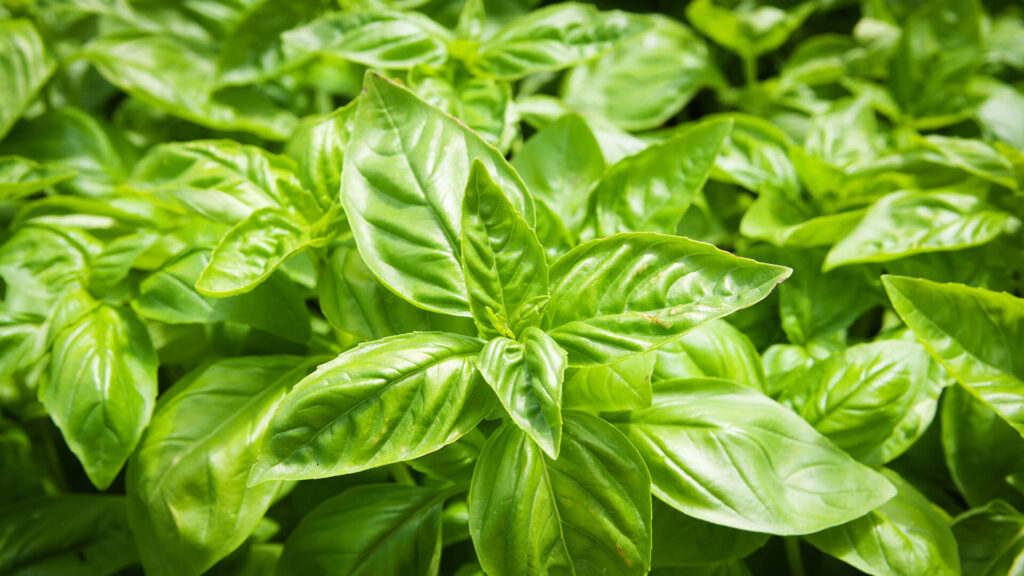
It’s common to find basil in the kitchens of foodies. After all, it does add a unique flavor and enticing aroma to many dishes.
Basil can also be found in the homes of proponents of natural remedies.
And that’s because this herb has been known to cure many health problems.
Staph infections can be controlled with basil because it’s a potent antimicrobial.
Research shows that basil can do wonders in preventing the formation and spread of Staphylococcus aureus before it negatively affects your health [39, 40, 41].
What You’ll Need:
- 3 cups of fresh basil leaves
- 1 tablespoon of fresh basil leaves
- 1 cup of water
Recommended Directions:
- Extract juice from three cups of fresh basil leaves in a blender.
- Apply the juice to the affected skin.
- To make basil tea, boil water in a pot.
- Remove from heat.
- Pour into a cup.
- Add a tablespoon of fresh basil leaves.
- Cover and steep for 15 to 20 minutes.
- Drink the tea three times a day until the condition improves.
13. Nutmeg
Nutmeg is a fantastic spice with antibacterial and anti-inflammatory properties known to fight against various bacteria, including staph infections and boils.
It’s also known to boost the immune system when consumed in food that helps the body build strong immunity against pathogens [42].
Nutmeg can be consumed orally by mixing it with food or applied directly to the affected area to show its effective result due to its active ingredients.
What You’ll Need:
- One to two teaspoons of nutmeg powder
- One teaspoon of water
Recommended Directions:
- Make a paste using the nutmeg powder and water and apply it to the affected area
- Put the paste on the affected area for 10-15 minutes and wash it with water
RELATED: 11 Health Benefits of Nutmeg You Need to Know
14. Apple Cider Vinegar
Apple cider vinegar is probably the most famous kitchen ingredient for various home remedies.
The acetic acid in vinegar contains potent anti-inflammatory and antibiotic properties. In addition, it is evident from several medical research that ACV boosts your immune defense against staph bacteria and helps you keep the infection at bay.
You can consume an ACV solution or use it topically to fight the infection internally and externally.
What You’ll Need:
- 1 tablespoon of ACV
- 2 tablespoons of water
Recommended Directions:
- Dilute ACV in water and use the solution to clean the infected area twice daily.
- Alternatively, add apple cider vinegar and 1 teaspoon of honey to a cup of mildly warm water.
- Consume the solution twice daily to boost your immune defense and fight off staph infections.
Related: How Effective is Apple Cider Vinegar for Ringworm Treatment?
15. Castor Oil
Castor oil or Ricinus communis comes from the seeds of castor oil plants. It is an important raw material in cosmetic skin and health care industries.
The oil is an excellent source of antibacterial, anti-inflammatory, and disinfectant compounds. Thus, castor oil is an effective home remedy for staph infection, swellings, and pain.
What You’ll Need:
- ½ cup of castor oil
- A cotton swab or cotton ball
- Medical gauze
Recommended Directions:
- Heat castor oil and let it come down to a mild temperature.
- Dip a cotton ball into the oil.
- Apply the oil-soaked cotton ball to the infected skin area.
- Using a medical gauze for warmth treatment, you can affix the cotton ball onto the skin.
- Repeat the treatment twice daily to get rid of the staph infection fast.
Related: 8 Benefits of Castor Oil For Your Hair + How to Use It
16. Fenugreek Seeds
Using fenugreek seeds as a natural remedy for staph infection should be your top choice. This eastern spice is famous for curing several diseases and boosting general well-being.
These aromatic seeds’ most vital health benefits are their immune-boosting abilities. Moreover, the anti-inflammatory properties of fenugreek seeds can battle the bacteria responsible for staph infections.
You can topically use the seed paste to heal the wounds caused by the infections.
What You’ll Need:
- 1 tablespoon of fenugreek seeds
- 1 cup of water
- Grinder
Recommended Directions:
- Soak fenugreek seeds in a cup of water for an hour.
- Remove the seeds from the water and grind them into a fine paste.
- Now apply the paste to the infected skin area like a layer.
- Let the paste remain on the skin for a couple of hours.
- Clean off using water and repeat the treatment several times a day.
Related: 14 Benefits of Fenugreek for Your Health (Backed by Science)
How to Prevent Staph Infections
So, we know about home remedies for the treatment of staph infections. However, it is always best to prevent it first, then contract and treat the disease. So, to avoid conditions of staph from occurring entirely, you should:
- Always wash your hands clean. Make sure you are thoroughly cleaning them with soap and water. Alcohol-based hand sanitizers are also good choices.
- Please disinfect and clean if you ever have a cut or scrape. Next, cover it with a bandage until it is properly healed.
- Avoid direct skin contact with wounds or bandages of other people. It is because you may get a staph infection from there.
- Personal hygiene is the best way to avoid getting staph infections.
- Always avoid sharing personal items like towels, toiletries, washcloths, razors, soap, nail clippers, clothing, bed sheets, etc. If you do so, the chances of getting a staph infection and other infections will be much less.
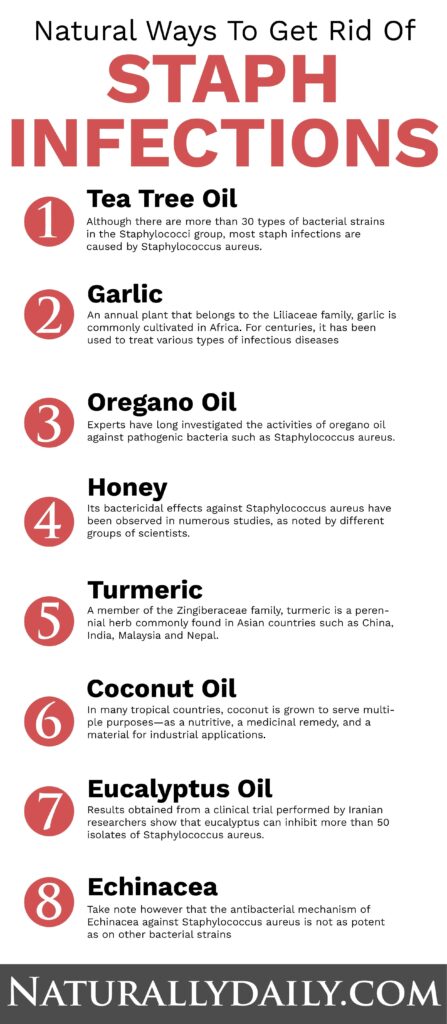
Some Q&A About Staph Infections
What is the difference between typical staph infection and MRSA (methicillin-resistant Staphylococcus aureus)?
The difference is simple. Staph infections occur due to many different types of Staphylococcus bacterial infections. Those strains of bacteria that become resistant to antibiotics are MRSA. MRSA is a type of staph infection that is resistant to beta-lactams. These are types of antibiotics. These antibiotics contain methicillin and others like oxacillin, penicillin, and amoxicillin. Usually, only 1% of people suffer from MRSA compared to twenty to thirty percent suffering from a staph infection.
Can staph infection develop during pregnancy?
Yes. Staph infection can develop during pregnancy. As a result, the gestating mother can develop a boil or folliculitis or cellulitis. Even though staph infections do not increase any risks of congenital disabilities or abnormalities, premature birth, or miscarriage, still, it is best to get treatment straightaway. In addition, pregnancy itself takes a toll on the body, so it is best to rid of a condition that can make her feel more pain and discomfort.
Do staph infections occur in babies?
Yes. They do. Unfortunately, babies do not have a fully developed immune system yet. That is why they are highly susceptible to staph infections. In babies, the common occurrence of staph infection is neonatal conjunctivitis. This is the medical term for pink eye in newborn children. You can read more about pink eye infection here.
Do staph infections occur after surgery?
Yes. They do. Patients recovering from surgery are at high risk of getting hospital-acquired methicillin-resistant Staphylococcus aureus (HA-MRSA). This happens because of the prolonged stay in the hospital.
One of the internal heart muscles. Symptoms include chest pain, fatigue, coughing, short breaths, fever, and unexplained weight loss.
Are staph infections contagious?
Yes, they’re contagious as long as the infected person has an active infection. Even possible staph on objects such as a sink or clothing that can contact skin cause infection. But mainly, staph bacteria are transmitted by person-to-person contact.
What kind of antibiotics can I use for staph infection?
Doctors usually recommend flucloxacillin and dicloxacillin to manage severe methicillin-susceptible S. aureus (MSSA) infections, but for less severe MSSA infections such as skin and soft tissue infections, first-generation cephalosporins clindamycin, lincomycin, and erythromycin are recommended. However, these antibiotics should only be used under a doctor’s prescription.
Can dogs suffer from staph infection?
Yes, any dog of any age can suffer from a staph infection, but older dogs with a weak immune system have higher chances of suffering from this infection.
Bottom Line
Staph infections are usually minor. But then again, they can turn into any significant health complication in no time. They can become deadly if the condition reaches your blood and cause death. Therefore, you should not wait but haste to eliminate staph infections.
These home remedies for staph infection can quickly get it under control and make you feel well. Plus, for cases that keep coming back, try using effective treatments even on drug-resistant microbes.
Still, if the conditions do not improve, it is best to seek medical help immediately.
Read More: 12 Ways to Get Rid of MRSA Naturally
